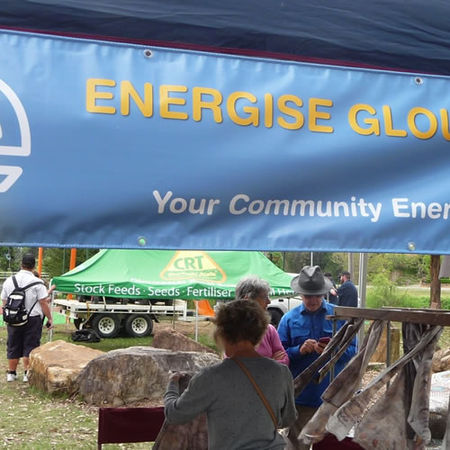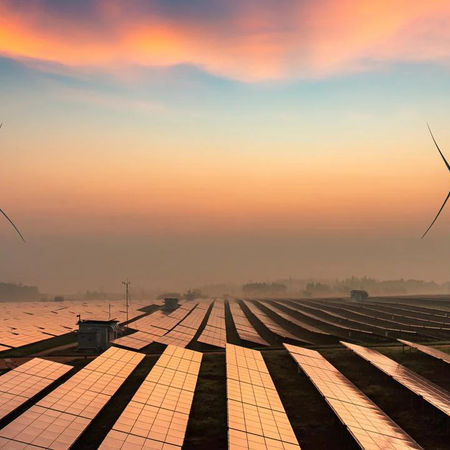
Chairman’s Note
Dear Members,
Our last Newsletter provided information about our Grant Application to the NSW Government Regional Community Energy Fund. The outcome of this will be known in September so we are still optimistic. Meanwhile, the Committee is continuing its work on managing and developing our other projects.
We are planning to have an information stall at the Farmers Market in Gloucester on Saturday 14 September 2019. There will be information about some of our other projects, such as how households can save on energy use and costs. There will ideas for new projects that you might like to contribute to, so come along and talk to us there.
Included in this newsletter are some updates on community and alternative energy stories Australia to keep you informed and to stimulate ideas. If you have any requests for information or any other ideas about what Energise Gloucester could do, please contact us by email at chair@energisegloucester.org
Yours with energy,
David Marston
Chair
BWNG Solar Roof Project
The solar system on the roof of the Neighbourhood Centre is working very well and we have been able to repay our community lenders 40% of their loans. In fact, with the very sunny weather that Gloucester has been experiencing there are days when the system generates more electricity than we can export to the grid. Therefore, we are exploring options for installing a battery in the system which will assist in reducing the cost of the “Meals on Wheels” freezer operated in the building.
The following graph shows generation and use for May 2019. The table provides a summary and gives the key to the colours. From this you can see that the system is supplying most of the electricity every-day and the monthly total is 60% of energy needs. Over the month, 80% of generated electricity is used internally and the remaining 20% is sold to the grid.



Local Solar Installers
Energise Gloucester has compiled a list of solar installers in the region that are accredited by the Clean Energy Council. Using accredited suppliers is one way of getting a better service.
If you would like a copy of the list please ask us at editor@energisegloucester.org
Green Power
The Green Power program is a government scheme that enables Australian businesses and householders, including renters, to tap into clean, reliable renewable energy from their electricity retailer. It's a great solution if you:
- renting but want to switch to renewables;
- Are keen to reduce your emissions without having to install rooftop solar; or
- Want Australia to install more renewable energy than what's specified under the Renewable Energy Target
When you choose to purchase certified GreenPower, you commit your electricity provider to buying the equivalent amount of renewable energy from renewable energy sources.
By choosing Green Power, you can essentially make companies provide renewable-powered electricity for your home.
Most importantly, GreenPower supports additional renewable energy above and beyond what is required by the National Renewable Energy Target.
The majority of Australian electricity retailers offer certified GreenPower so it is usually just a matter of calling your existing electricity company to opt-in. You could also select a supplier from https:// www.greenpower.gov.au and apply online or by phone.
You can choose to go 100% renewable or, if you can't afford to offset 100% of your electricity, you can choose how much of your power comes from GreenPower.
More than 305,000 Australian households and businesses currently contribute to GreenPower and the more who join the better.
Electricity Price Changes
Major changes to energy price regulations were introduced from 1 July 2019 affecting customers on standing offer rates. The STANDING OFFER RATE was the price you paid if you didn't select another rate with your retailer. Standing Offer Rates were generally higher, as they were the non-discounted rates which applied to customers who had not actively selected a cheaper rate with their retailer. Customers on Standing Offer Rates automatically moved onto a Default Market Offer (DMO) rate on July 1. If you have already chosen a Market Offer (discount price) from your retailer on the phone or on-line then this is the price you will continue to pay.
The Default Market Offer (DMO) is a government initiative to make electricity prices more affordable and easier to understand. The DMO represents a benchmark, or reference price, for setting prices by each retail company.
New DMO prices were introduced on July 1 in NSW, South East QLD and SA but will not affect any customers already on a Market Offer. The DMO will only reduce prices for customers still on Standing Offer Rates. A Market Offer will almost always be cheaper than the DMO.
New DMO energy prices are one of the biggest shake ups to Australian retail energy market in recent years - the result of regulatory pressure on retailers to reduce prices.
Recent comments from Paula Conboy, chair of the Australian Energy Regulator (AER), confirm Australian energy users should not be complacent in relying on the introduction of the DMO to reduce their bills, and the need to shop around remains key to paying less on energy bills.
Ms Conboy said, “Market offers are almost always cheaper than the DMO, and shopping around for a deal that best fits the needs of your household or business is the best way to reduce your power bill.
“Our analysis has shown that calling your retailer and asking for a better deal can deliver real savings”
See how your energy rates have changed since 1 July 2019. Check out what you could get by using the website www.energymadeeasy.gov.au
Do you know the Answer?

Send the correct answer by email to: editor@energisegloucester.org
What produces electricity chemically by combining hydrogen fuel with oxygen from the air.
1: Hydroelectric Energy
2: Fuel Cell
3: Geothermal Energy
4: Ocean Thermal Energy Conversion (OTEC)
The answer to our last question was No C - when the total amount of energy used every year is equal to the amount of renewable energy created on site.
The first person in with the correct answer was:
Lorna Tomkinson






